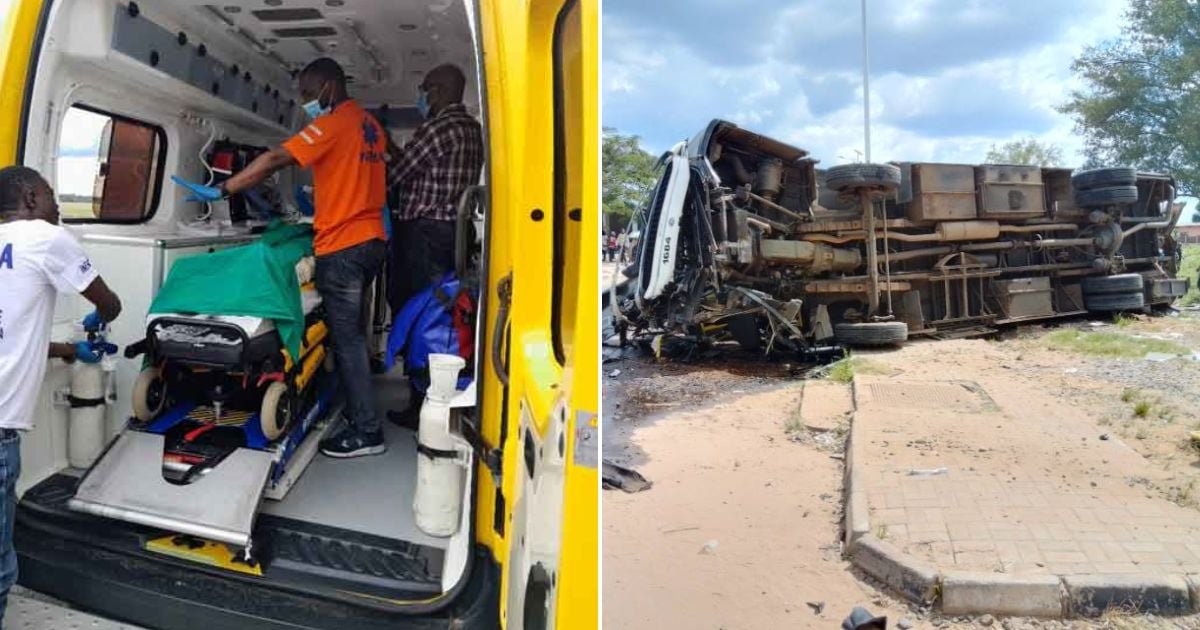Two Cuban healthcare workers, injured last Tuesday in a collision involving a train and a bus in Angola's Moxico province, have been airlifted to the nation's capital, Luanda. They are currently receiving specialized care at Meditex Clinic. According to the state-run Prensa Latina, one of the women remains in critical condition but stable, with vital signs within normal ranges, while the other is in a less severe state and showing promising recovery.
The two additional Cuban collaborators involved in the incident, which took place in the city of Luena, have already been discharged. Arrangements for the airlift were made with the assistance of the National Institute of Medical Emergencies and other organizations to ensure close monitoring of the patients' progress. These women are part of the Cuban medical and educational brigade operating in the African nation.
The accident occurred when a bus transporting educators from the Moxico Higher Polytechnic Institute, where they were teaching, was struck by a train at a level crossing. Following the crash, Angolan authorities and the Cuban medical brigade in the area swiftly organized the transfer of the injured to the Moxico General Hospital and subsequently to Luanda.
On Sunday, Cuba’s ambassador to Angola, Óscar León, along with Antex S.A. executive president Carlos Martínez and vice president for Angola Ernesto Gutiérrez, visited the patients at Meditex Clinic, as highlighted by Prensa Latina. Institution director Mario Delgado and the medical team explained the treatment administered and the patients' health developments. Cuban and Angolan doctors, including specialists from Lunda Norte and Lunda Sul provinces and Meditex Clinic, are attending to them.
Last Thursday, Prensa Latina reported that one collaborator was in severe but stable condition with a reserved prognosis, showing a positive clinical-surgical evolution. Another patient was recovering well, a third had been discharged, and the fourth was recuperating from surgery for a left humerus fracture.
The provincial delegation of the Cuban School Graduates Association, known as Caimaneros, visited the hospital to show solidarity with the accident victims. In recent years, Cuban doctors in international brigades have faced increasingly dangerous conditions that threaten their safety.
In February 2024, the extremist group Al-Shabaab claimed the deaths of Cuban doctors Landy Rodríguez and Assel Herrera, who had been abducted in Somalia since April 2019. Unofficial reports suggested they died in a drone strike in Jilib city. These professionals were part of a healthcare team stationed in Kenya and were kidnapped while traveling to a hospital in a protected convoy. Despite government efforts, rescue attempts were unsuccessful. This tragic event highlighted the international concerns over the security of Cuban doctors abroad.
In September, reports emerged that Cuban doctors in El Palmito, a town in Mexico's Sinaloa state, were withdrawn by the Cuban embassy due to rising violence linked to organized crime. The area had become nearly deserted because of threats and forced displacement of residents. The state health secretary noted that the doctors were unprepared for the region's stress and insecurity, jeopardizing their lives.
These incidents underscore the inherent risks faced by Cuban medical missions abroad, particularly in environments where armed conflicts, insecurity, or territorial control by irregular groups are prevalent.
Understanding the Risks and Challenges for Cuban Medical Brigades
What happened to the Cuban doctors in Angola?
Two Cuban doctors were injured in a train and bus collision in Angola's Moxico province and are receiving specialized medical care in Luanda.
How is the Cuban government supporting the injured doctors?
The Cuban government, in collaboration with Angolan authorities, organized the doctors' transfer to Luanda for better medical attention and is closely monitoring their recovery.
Why were Cuban doctors withdrawn from Mexico?
Cuban doctors were pulled out of El Palmito, Mexico, due to escalating violence associated with organized crime, which posed significant threats to their safety.
